I was scouting in the West Village last week…
…when I happened to notice a cute stuccoed building on Perry Street, with an unusual second-story apartment entrance just above the arched entrance.
As I was checking out the building, I happened to look through the gate…
…and noticed something interesting: was that a second building just inside?
The West Village is filled with all sorts of backyard apartment buildings hidden from the street. Most of the time, they’re not all that interesting – basically just another building wedged into a bit of extra space. But curiosity got the best of me, and I made an appointment to check it out…
…and discovered that not only is there a hidden building back there – there’s also this amazing courtyard!
Seriously, how beautiful is that? I can only imagine how it looks at night when the globe lamps and string lights are lit up.
The building tucked behind 93 Perry Street is an example of a “backhouse” – essentially, a property built behind a main dwelling before strict property laws were enacted in the 1860s and 1870s to prevent overcrowding. According to this NY Times article, while you might assume such buildings were intended as cramped living space for the poor, they were actually more commonly built by the wealthy. Back then, backyards were traditionally used for housework, drying clothes, and for cooking, and to lose this vital space was only feasible for those who were able to perform such tasks indoors.
Very little seems to be known about the backbuilding at 93 Perry Street, other than the fact that it was built in 1827. In particular, I love the arched French windows on the second floor…
…which offer a great view of the courtyard below:
I also love the quirky mix of windows and the tangle of fire escapes leading up to the rooftop:
Meanwhile, the streetside building on the lot has some neat quirks of its own:
A wooden staircase winds up the building, offering porch space…
Meanwhile, a curved staircase leads to a first floor unit:
And of course, the staircase to the second floor apartment located above the arch…
…a pretty unusual entrance for New York:
In 1924, the NY Evening Post did an article on the property, writing:
“Everything about [93 Perry Street] is lost. Name, country, identification of any sort…One boarded house, with several layers of steps leading up to a heavy frayed balcony, seems to have been left over from the past centuries, and the wash basket hanging neglected from the side wall appears utterly neglected. Behind a fence, clotheslines swing from house to house, fluttering fitfully with community apparel that may never be reclaimed by the rightful owners.”
This drawing accompanied the article…
…and it’s pretty amazing to find things looking much the same over 89 years later, including the wooden staircase:
The article continues:
“Some people have lived there for years, and are still at a loss for an address. If the old alley ever had a name, it has long ago retired into relentless obscurity never to reappear in the annals of the New York directory…No one ventures a definite solution of the mystery. But there is singing from an open window where bright flowers edge the sill, and the least tinge of corned beef and cabbage in the air. Everybody’s happy – and what’s in a name?”
The property does have has an interesting literary connection that seems fitting with Halloween just two weeks away: horror author H.P. Lovecraft visited 93 Perry Street during an all-night walking tour of old New York and used it as inspiration for his short story He, about a strange man who tells of learning occult rituals from the former Native American inhabitants of New York, which he uses to his devious benefit.
In the story, the narrator lives at 93 Perry Street, writing:
“Then, on a sleepless night’s walk, I met the man. It was in a grotesque hidden courtyard of the Greenwich section, for there in my ignorance I had settled, having heard of the place as the natural home of poets and artists. The archaic lanes and houses and unexpected bits of square and court had indeed delighted me…”
Lovecraft mentions something curious in the story:
“The man came upon me…as I was threading a series of detached courtyards; now accessible only through the unlighted hallways of intervening buildings, but once forming parts of a continuous network of picturesque alleys.”
Without a doubt, Lovecraft is referring to the backyards of the buildings adjacent to the courtyard at 93 Perry, now divided with squat brick walls. Could this have once been a through alley?
It certainly seems possible that the passage on the right once extended all the way to Perry Street…but who can say for sure?
The NY Times estimates that approximately 75 backhouses still stand in the area from Houston to 14th, Broadway to the Hudson River. What other hidden courtyards exist just out of sight?
In honor of the upcoming holiday, I’ll let Lovecraft have the last word:
“The archaic lanes and houses and unexpected bits of square and court had indeed delighted me…and in the hours before dawn, when all the revelers had slunk away, I used to wander alone among their cryptical windings and brood upon the curious arcana which generations must have deposited there. This kept my soul alive, and gave me a few of those dreams and visions for which the poet far within me cried out.”
Special thanks to 93 Perry for allowing me a tour. The property is interested in considering proposals for film and photo shoots – send me an email for further information. Finally, please note that 93 Perry Street and its courtyard is private to residents only.
-SCOUT

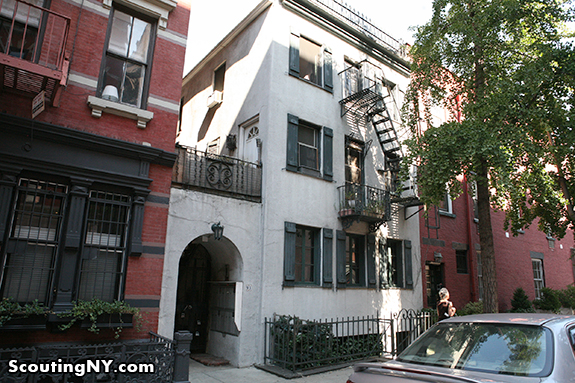
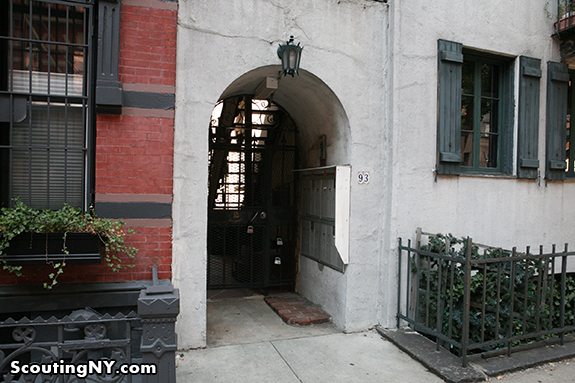

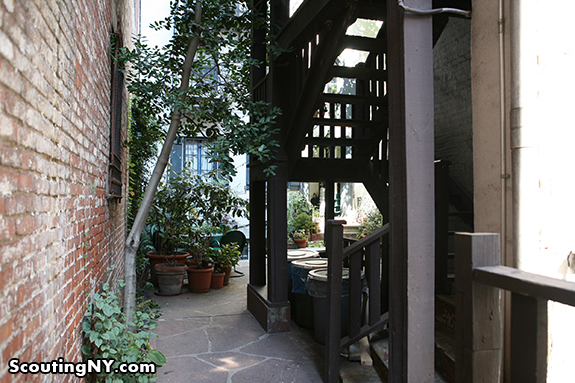

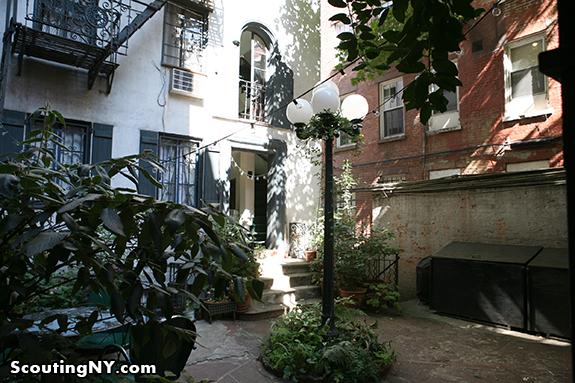
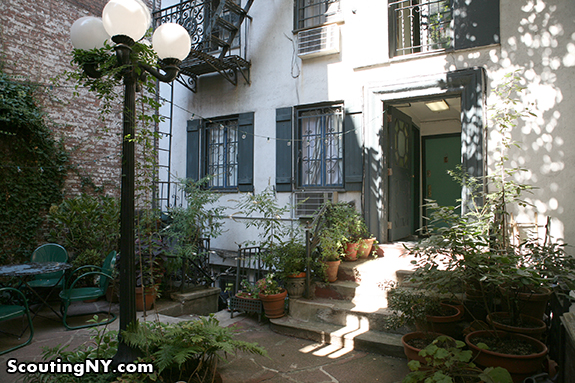

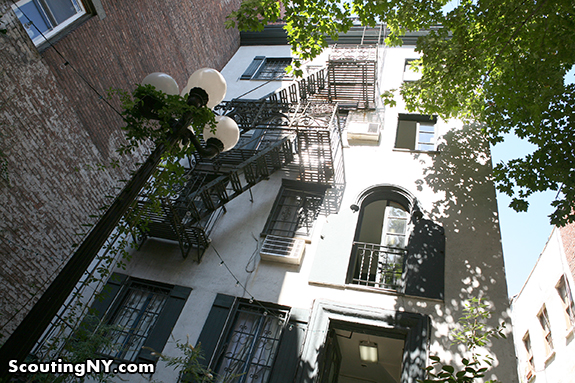
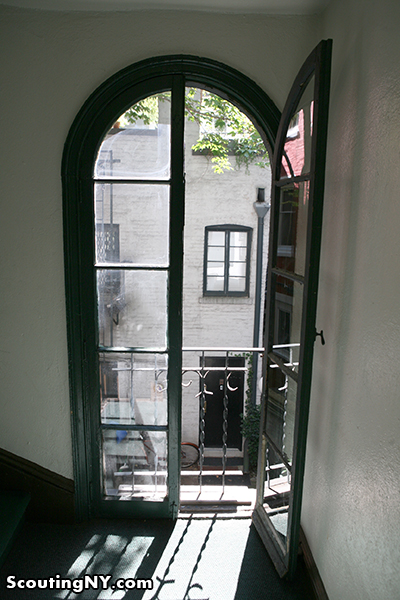
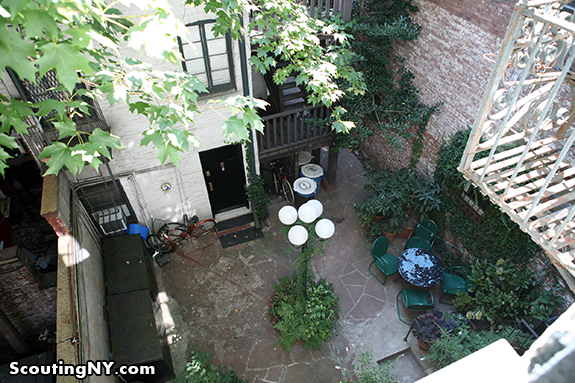
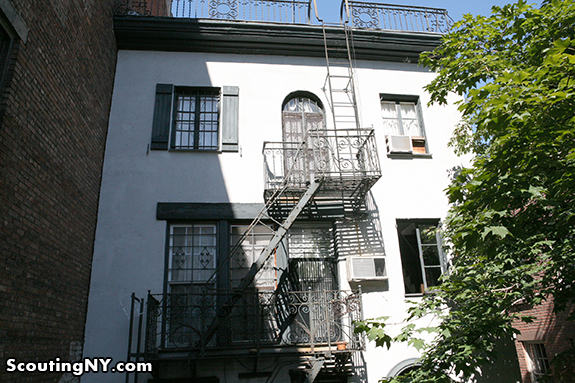
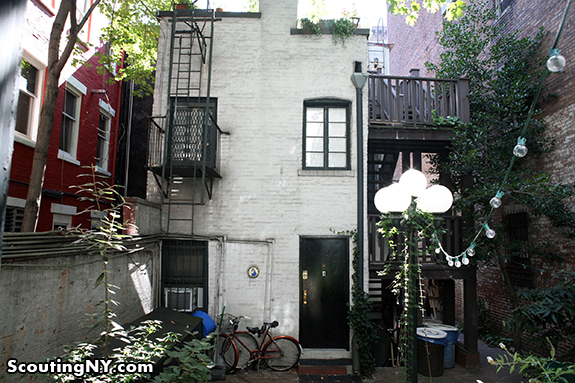
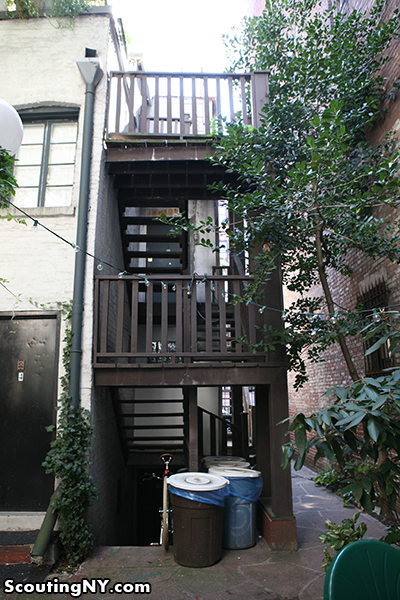

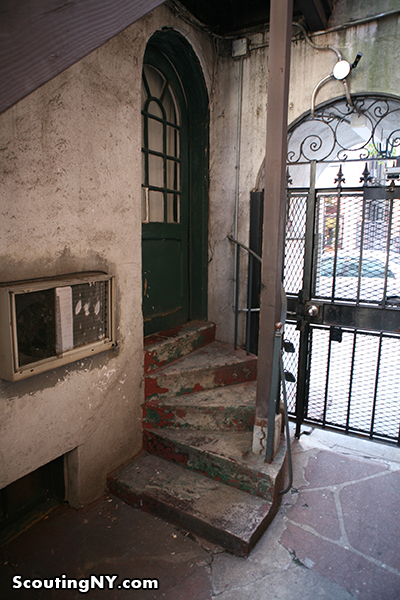
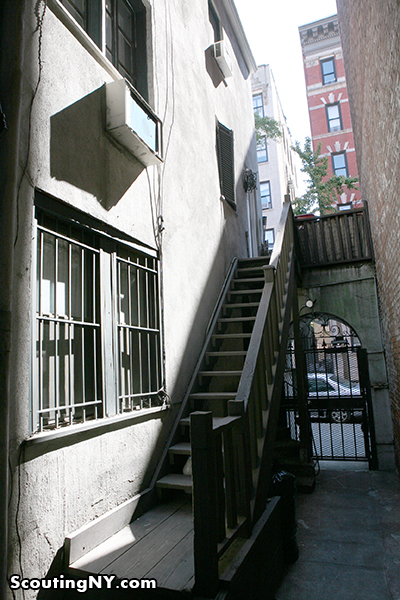
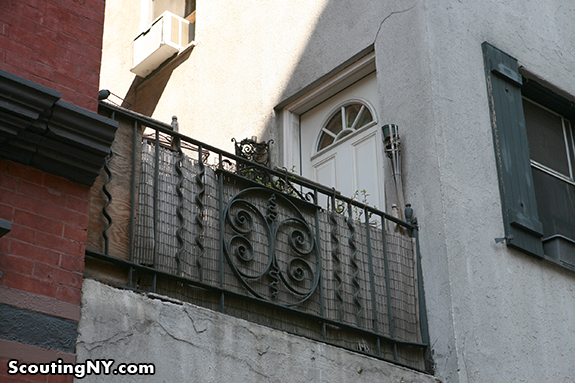
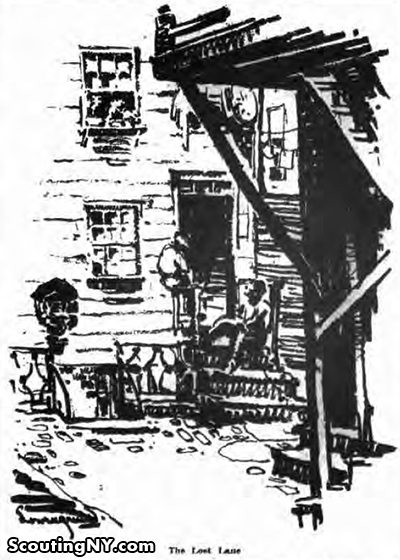


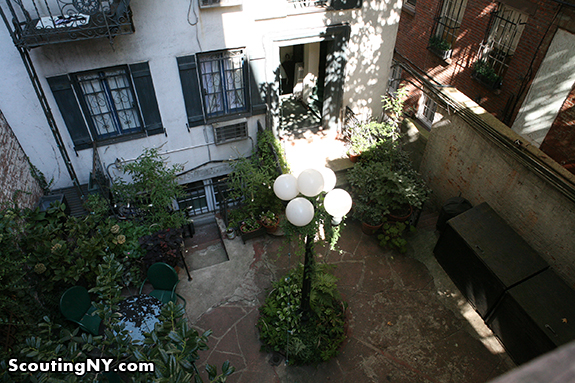

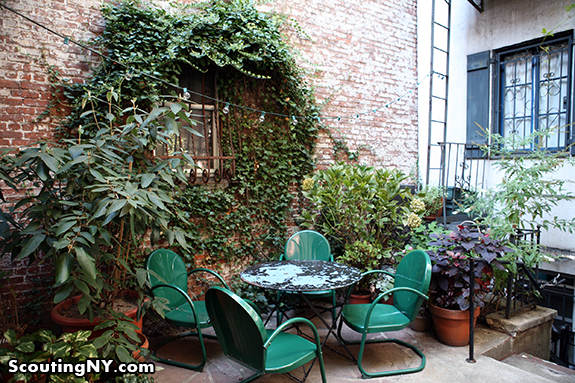
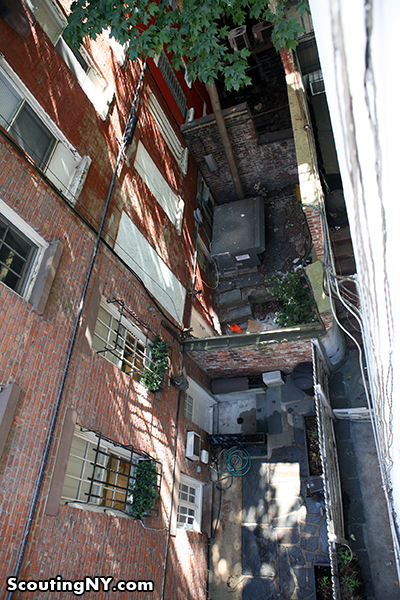
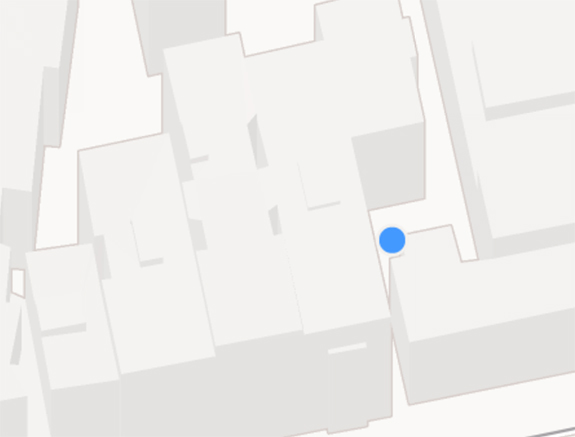

What an apartment showpiece.
This almost looks like the courtyard in “Serpico.” The way I remember it “Serpico” was on Minetta Lane or Street, but the courtyard does not match up. This one is very close though. Check it out.
In the movie Serpico was supposed to have lived on Minetta St. Having walked over there, can’t tell if there’s really a courtyard behind the building or not. Now in the book the real Frank Serpico actually lived on Perry St. hmmm….
Very cool! I shot at a location that had a courtyard very similar to this. It was a special location for me, as it was one of the first I ever fully managed from prep, through the shoot, and after—on Woody Allen’s “Sweet & Lowdown.” The location I’m talking about is Chumley’s, at 86 Bedford. Lots of amazing history behind that place, too: :
http://en.m.wikipedia.org/wiki/Chumley's
If you study the satellite map between 93 Perry and 86 Bedford, you can see quite a few courtyards like this. I believe 86 Bedford and 93 Perry could have perhaps shared an alley, at some point, back in the day!
Fascinating. All my writing is about New York, and this mystery has me titilated beyond my capacity to concentrate on the work before me. I’m determined to learn more about this. (And I feel as though we should be friends! Haha!!)
Behind 16 – 18 Gay Street is a courtyard that connects to Christopher Street. In 1960-61, I lived at #16. There’s a courtyard in the movie, “My Sister Eileen” whose layout resembles this one. The real “Eileen” lived with her sister, who wrote it, in the basement of #18. The movie courtyard was on a soundstage at Columbia Studios button, in architectural layout, somewhat resembles Perry a Street. I was told that a sequence from “Butterfield 8” was shot in the Gay Street courtyard but I didn’t see the movie.
Sorry for the typos; the mini-iPad keyboard is truly “mini”!!
I am just a native New Yorker enjoying your article. What a darling little space!
Back in 2000, I worked as a web developer at “Luminant Worldwide” (see “My Fake Job” in 11/27/00 New Yorker for more on Luminant)…and my Boss was this big bear of a 21 year-old with a Hagrid/man-child personality — I just loved this guy. Anyways, he showed me his apartment down in the village once. You had to completely walk under the street-facing building to get back there, and you couldn’t see into the courtyard at all from the street, but instead of a little 1820ish two story, his apartment was a one-story hobbit house — complete with a curved hobbit door. Huge interior one-piece interior wooden beams, tiny little windows….you had to stoop down to get into a couple of the “rooms”. My boss claimed it was more of a Dutch-colony New Amsterdam-era building…I have no way of knowing of course, but it was really really OLD and really really cool, and really really expensive rent.
There’s also a back building on the Upper East Side – not sure of the street, probably 80, 81, 82 or 83, between First & Second, south side of the street.
Thanks, Scout, for posting this info. I walk my dog through this neighborhood every day. Each time we take a different path and each day I notice another forgotten (or at least well hidden) treasure of the city.
As always, I enjoy ALL of your stories!
Back in the mid 90’s I was looking to buy a house and was shown a house that was a back building on the north side of West 20th Street. The house was originally constructed as a stable and I believe the front property was one of the buildings that Thomas used as a bakery for his muffins. I loved the location and off-street setting. Unfortunately, I quickly realized I would have to get rid of everything I owned since at best it was a 1,000 sf duplex and I would need under scale furniture (like they use in model homes to make them look bigger).
Thanks for posting. My grandparents lived at 106 Perry Street, albeit briefly, in 1928. I wonder if they ever visited 93.
I used to live in the front building! Your article brought back so many memories!
Back in the 70s we used to love going to the village and finding all these little places like this. Back then there were no locked gates and we’d walk through all kinds of back rows of this type of home. How cool. I could never find them again. 🙂
There’s another one on Carmine St near 6th Ave. I think the address is 5 Carmine St. I once babysat for a family that lived there and I thought, “THIS would make me happy to stay in NYC forever.”
One famous resident was the actress Agnes Moorehead (1900-74), who lived here in the summer of 1929 (maybe longer), after graduating from the American Academy of Dramatic Arts. She was living here when she received word of the ultimately terminal illness of her younger sister Margaret in Dayton, Ohio. Margaret Moorehead died on July 14, 1929. She was only 23.
I am writing a biography of Moorehead and, though I’ve stood outside this house several times, it was wonderful to get the “inside view.” Thanks for that.
Axel, how do you know Aggie stayed here? Do you know where she lived in her later years when she was in NY?
Thanks!
Shannon
shannon, in Charles Tranberg’s biography of Miss Moorehead there is a reprint of a telegram she received from her mother in July 1929, advising that things were not well at home and asking her to come at once. The top of the telegram shows the address to which it was sent, 93 Pery Street, NY (yes, spelled with one ‘r’ instead of two). Tranberg found this telegram in Miss Moorehead’s archive at the Wisconsin Historical Society.
During her last years when she was in New York to work on Broadway, for the revival of “Don Juan in Hell” and for “GiGi,” she stayed at the upper east side apartment of her friend Mary Roebling. More info is available in the Tranberg bio.
I lived here in the early 1990’s..the back building ground floor apt. with the stairs spilling out into the courtyard…my cat, “Scout” loved it. I had heard that the front building was an ironsmith’s shop and the back building ( mine) was his home. Never confirmed, but a nice story. The apartments were split two per floor when I moved in. My bedroom overlooked another hidden gem of a courtyard…lush green with a fountain…
Hi. I,m a portuguese reporter and i saw some connections that i find interesting to explore. It is all so similar with portuguese architecture in lisbon, portugal – the small hiden back patios, rows and buildings, after curved entrances, doors and stairs, many with hobbitt sizes. Perry is the english version of Pereira, a portuguese name. There is also a sample of portuguese tiles in the corner of perry with bleecker st. Is it possible that portuguese comunities from the area have had any intervention in the process? Does anyone knows where to find clues to verify this possibility? Thanks